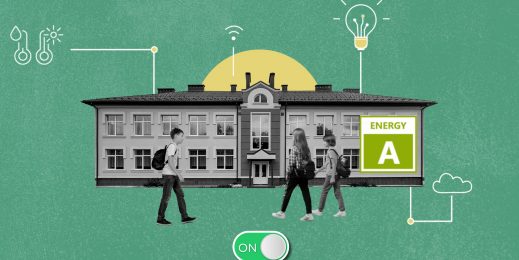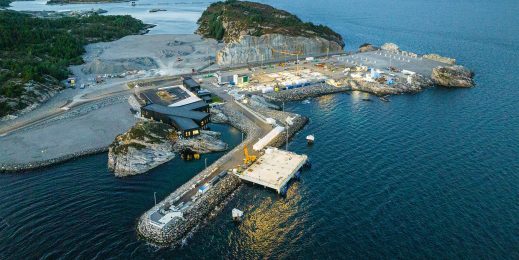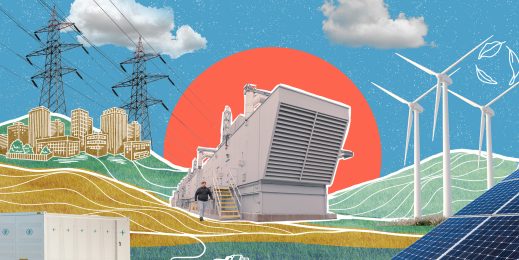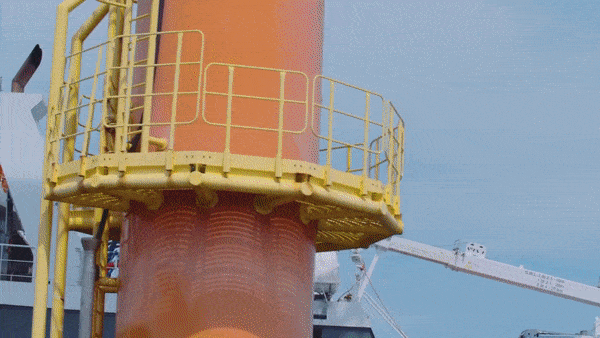
How technology is helping workers walk across the sea
The biggest hazards you’re likely to face on your way to the office are vehicles, cyclists, and perhaps the occasional daring seagull looking to relieve you of your breakfast croissant. For some of us however, the journey to work can be much more perilous. ![]()
![]()
![]()
Oil rig and offshore wind turbine workers have always faced risks when arriving and leaving their respective platforms, presenting challenges to companies for decades. Historically, their transportation methods have involved helicopters, or swing ropes or baskets extended from ships. Even during ideal conditions, these methods can be perilous for workers. In up to 20 percent of cases, weather or sea conditions have also made it impossible to use these methods safely, causing disruption to normal operations.
As more industries have expanded their operations to the open sea and platforms, Dutch company Ampelmann saw a growing need to reliably and safely transport workers to and from the platforms, without losing precious time because of weather or sea conditions. To address this issue, Ampelmann develops motion compensated gangway systems and services that counter the choppy movements of the sea, to safely transport offshore workers to and from vessels to platforms.
Employees can now essentially walk to work from a ship to an offshore platform, easily and safely. Solutions were already at 98 percent uptime, but Ampelmann saw room to boost that efficiency even further, ensuring mission-critical work could continue regardless of weather or other conditions.
Enter OrangeNXT, a Netherlands-based Microsoft partner that supports companies in their digital transformation journey with ready-to-use solutions using Microsoft Azure. The company supports customers in adding business value to their end customers by offering new services, ensuring uptime, reducing costs, empowering workforces, and strengthening the competitive edge.
Bridging the gap
OrangeNXT developed a solution it believed could help Ampelmann use data to boost its motion compensated gangway systems performance. Its Internet of Things (IoT) solution, conNXT, is based on the Microsoft Azure IoT Suite and is a ready-to-use platform for remote monitoring, asset management, and predictive maintenance that can easily be customised for a customer’s specific needs.
“We believe in digital, data-driven results,” Bas Lamme, Business Development Manager at OrangeNXT, says. “Companies like Ampelmann want to be proactive to potential issues before they become serious and result in disruptions of service and operations. Also, there is the need to keep workers safe, regardless of outside factors. That’s what we can provide with our conNXT platform.”
The Ampelmann motion compensated gangway system is operated by a highly trained onboard operator who can react quickly to a change in circumstances. Sometimes however, a vessel might need remote assistance from an onshore engineer.
“That’s where conNXT comes in,” Lamme explains. “ConNXT enables a steady internet connection between the offshore system and the onshore Azure platform. More than 400 parameters, like oil pressure, temperature, acceleration, energy consumption, and warning or error statuses, are continuously monitored on board. This data provides the onshore engineer with detailed insights to assist the offshore operator in making the best and safest decisions in the moment.”
OrangeNXT was also able to address new European data privacy laws with its highly secure and scalable Azure-based solution. In addition, OrangeNXT was also able to provide the entire solution for Ampelmann in just 20 days.
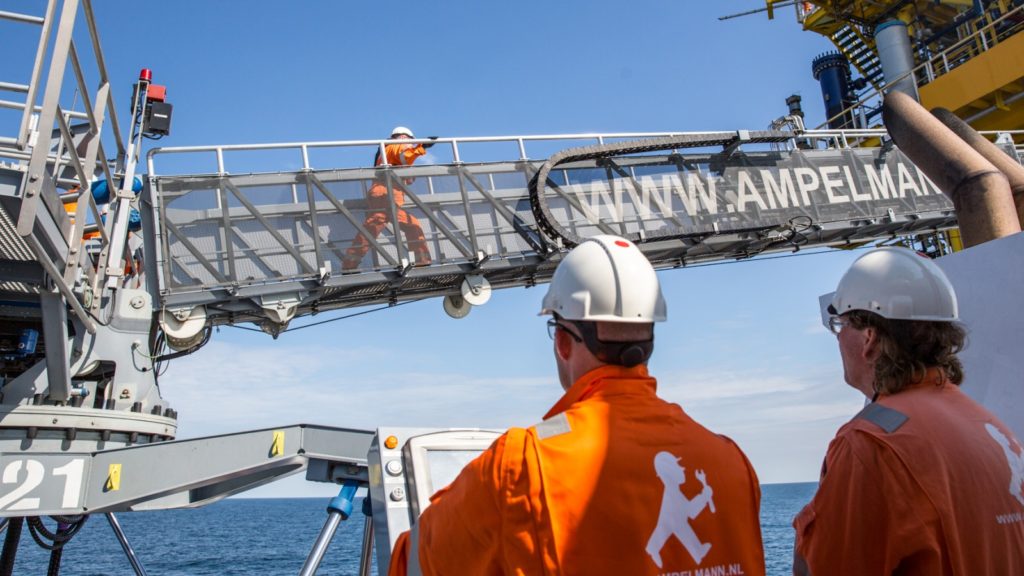
Driven by data
According to Ivar Boom, Manager of Data Services at Ampelmann, conNXT is helping Ampelmann to make better plans, and providing the critical data its employees need. “Data is the differentiator,” Boom says. “The first step is remote monitoring and preventive maintenance. The second step is becoming predictive by collecting and analysing weather data.”
Thanks to conNXT’s built-in IoT gateway – a program based on Azure IoT Edge that creates the connection between intelligent devices and the cloud – conNXT proves to be far more reliable in real working conditions than trying to access the Internet from the open sea. With the conNXT IoT gateway, Ampelmann can process more than 400 parameters locally at the edge, with no gaps in information, no matter how remote the vessels might be.
Boom says, “That’s why we analyse and process data on board and send the operation key performance indicators to the Azure cloud. When unfamiliar conditions occur, the IoT gateway connects immediately to the cloud to alert the operations control centre at Ampelmann’s headquarters in Delft.”
Data is the differentiator
The other important piece, and a priority for Ampelmann, is to use this rich data to make better preventive maintenance plans. “On our vessels we have an industrial PC with a swappable hard disk that collects all raw data,” Boom says. “We collect this data every time the vessel arrives in the harbor, upload it in conNXT, and analyse it to get a better understanding of all factors that affect the way our systems work. We want to know: why do certain parts of our systems need maintenance sooner than others? What’s the influence of waves, docking directions, vessel types, and other factors on maintenance that’s needed? Getting the answers to those questions lets us transform our maintenance strategy from preventive to predictive, improving the uptime of our systems and providing even safer operations.”
On the horizon
In the near future, Ampelmann expects to get insights that can help it improve even further. “We hope to make comprehensive predictions to improve the workability based on various combinations of internal and external parameters to know upfront,” Boom says.
Ampelmann is enthusiastic about the growth path it takes with conNXT. “We innovate in an agile way, attracting new talent with exceptional technology and strengthening our product leadership,” says Boom. “Analysing all kinds of data―data of our motion compensated gangway systems, telemetric data, weather predictions―will make us more and more efficient as we go.”











